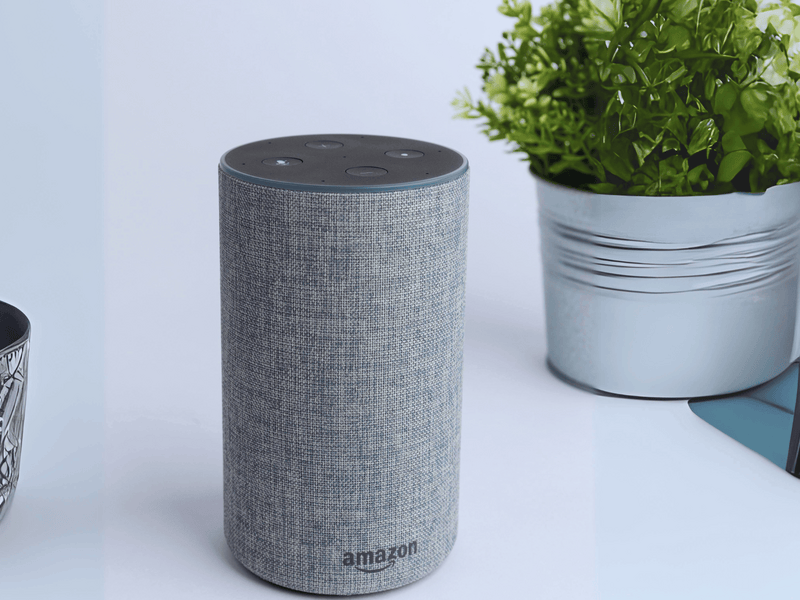In the world of smart home technology, there are various wireless communication protocols available to connect devices and create a seamless, interconnected ecosystem. Two popular options for smart home connectivity are Zigbee and Wi-Fi. While both protocols serve similar purposes, they have distinct differences that make them better suited for different applications. In this comprehensive guide, we will explore the features, benefits, and considerations of Zigbee and Wi-Fi, helping you make an informed decision for your smart home needs.
Table of Contents
- Introduction to Zigbee and Wi-Fi
- Understanding Zigbee
- Understanding Wi-Fi
- Zigbee vs. Wi-Fi: Key Differences
- Advantages of Zigbee
- Advantages of Wi-Fi
- Choosing the Right Protocol for Your Smart Home
- Zigbee 3.0: The Future of Zigbee
- Conclusion
1. Introduction to Zigbee and Wi-Fi
Before diving into the details, let’s start by understanding what Zigbee and Wi-Fi are and their roles in the realm of smart home technology.
Zigbee is an open-standard wireless communication protocol based on the IEEE 802.15.4 standard. It was developed in 2003 and is designed for low-power, low-bitrate, short-range communication. Zigbee operates on the 2.4 GHz band and is also available in shorter frequencies for different regions. It is commonly used in wireless sensor networks and home automation systems.
Wi-Fi, on the other hand, is a wireless network protocol based on the IEEE 802.11 standards. It operates on higher frequencies, including 2.4 GHz and 5 GHz, and offers higher data transfer speeds compared to Zigbee. Wi-Fi is widely used for connecting devices to local area networks (LANs) and the internet, making it a popular choice for various smart home devices, such as smartphones, tablets, and smart speakers.
Now that we have a basic understanding of Zigbee and Wi-Fi, let’s delve deeper into each protocol and explore their features and capabilities.
2. Understanding Zigbee
Zigbee is a wireless protocol specifically designed for low-power, low-data-rate applications. It operates on the 2.4 GHz frequency band, which is an unlicensed spectrum available worldwide. Zigbee devices are organized in a mesh network topology, allowing each node to communicate with other nodes, creating a self-healing and reliable network.
One of the key advantages of Zigbee is its low power consumption. Zigbee devices are designed to operate on battery power for extended periods, making them ideal for applications where power efficiency is crucial. This feature makes Zigbee suitable for smart home devices that need to operate continuously without frequent battery replacements.
Zigbee also offers backward and forward compatibility. Zigbee devices certified under the latest Zigbee 3.0.1 standard can seamlessly join existing Zigbee networks, ensuring compatibility with older devices. This flexibility allows users to expand their smart home ecosystem without replacing their existing devices.
3. Understanding Wi-Fi
Wi-Fi, short for Wireless Fidelity, is a widely adopted wireless communication protocol that enables devices to connect to the internet and local networks. It operates on the 2.4 GHz and 5 GHz frequency bands, offering higher data transfer speeds compared to Zigbee. Wi-Fi networks are typically organized in a star topology, where devices connect to a central wireless router or access point.
Wi-Fi is known for its high bandwidth, allowing for faster data transmission and supporting a wide range of applications. It is commonly used for internet access, streaming media, and connecting multiple devices within a home network. Wi-Fi is a popular choice for smart home devices that require high-speed data transfer, such as streaming devices, security cameras, and smart TVs.
4. Zigbee vs. Wi-Fi: Key Differences
Now that we have a basic understanding of Zigbee and Wi-Fi, let’s compare them based on various factors to help you determine which protocol is more suitable for your smart home needs.
IEEE Standard
Zigbee operates under the IEEE 802.15.4 standard, while Wi-Fi operates under the IEEE 802.11 standard. These standards define the specifications and protocols for wireless communication in their respective domains.
Certification Process
Zigbee devices are certified by the Connectivity Standards Alliance (CSA), formerly known as the Zigbee Alliance. The CSA ensures that Zigbee devices meet specific standards and interoperability requirements. Wi-Fi devices, on the other hand, are certified by the Wi-Fi Alliance, which guarantees compatibility and adherence to Wi-Fi standards.
Development Timeline
Wi-Fi was developed earlier than Zigbee, with the first Wi-Fi standard released in 1997. Zigbee, on the other hand, was conceived in 2003 and launched in 2004 to address the need for low-power, low-data-rate applications.
Operating Frequency
Wi-Fi operates on both 2.4 GHz and 5 GHz frequency bands, providing higher bandwidth and faster data transfer speeds. Zigbee primarily operates on the 2.4 GHz band, but it also supports shorter frequencies like 915 MHz and 868 MHz, depending on regional requirements.
Channel Bandwidth
Zigbee uses a channel bandwidth of 1 MHz, while Wi-Fi channels have a bandwidth of 20 MHz, 40 MHz, 80 MHz, or even higher. This difference in channel bandwidth affects the data transfer speeds of the two protocols.
Network Range
Zigbee is designed for short-range communication, typically reaching a range of 10-30 meters. However, recent advancements have enabled Zigbee devices to achieve longer ranges of up to 100 meters in some applications. Wi-Fi, on the other hand, has a range of up to 100 meters, making it suitable for larger spaces.
Data Transfer Speed
Wi-Fi offers faster data transfer speeds compared to Zigbee. Wi-Fi networks defined under the 802.11 standard can provide speeds ranging from 11 Mbps (802.11b) to several gigabits per second (802.11ax and upcoming standards). Zigbee, on the other hand, has a maximum data transfer speed of 250 kbps, which is sufficient for most smart home applications.
Power Consumption
Zigbee is renowned for its low power consumption, making it ideal for battery-powered devices. Zigbee devices are designed to operate on minimal power, allowing them to run for weeks or even months on a single battery. Wi-Fi devices, on the other hand, consume more power, requiring frequent charging or continuous power supply.
Network Elements
Zigbee networks consist of three main types of devices: Zigbee coordinator, Zigbee end router, and Zigbee end device. These devices work together to form a mesh network, with each device capable of relaying signals to extend the network’s range. Wi-Fi networks, on the other hand, rely on a central wireless router or access point to connect devices to the network.
Network Size
Zigbee networks can support a larger number of devices compared to Wi-Fi networks. While a single Wi-Fi network can accommodate up to 2007 nodes, Zigbee networks can support over 65,000 nodes. This scalability makes Zigbee suitable for larger smart home deployments.
Network Security
Both Zigbee and Wi-Fi provide security features to protect the network and data. Zigbee uses Advanced Encryption Security (AES) methods for encryption and CCB-CCM methods for network security. Wi-Fi networks, on the other hand, use WEP, WPA, and WPA2 protocols for encryption and security. The choice of security features may vary depending on the specific implementations of each protocol.
Applications
Zigbee and Wi-Fi have different applications in the smart home ecosystem. Zigbee is commonly used for home automation systems, wireless sensor networks, and industrial machinery coordination. Wi-Fi, on the other hand, is widely used for internet access, media streaming, and connecting various consumer devices within a home network.
5. Advantages of Zigbee
After comparing Zigbee and Wi-Fi based on various factors, let’s explore the advantages of Zigbee that make it a popular choice for smart home applications.
Backward and Forward Compatibility
Zigbee devices are designed to be compatible with both legacy and future versions of the Zigbee protocol. This backward and forward compatibility allows devices certified under the latest Zigbee 3.0.1 standard to seamlessly integrate with existing Zigbee networks. Older Zigbee devices can also join Zigbee 3.0 networks based on the allowed security policies and over-the-air updates. This compatibility ensures that your smart home devices will continue to work together even as you expand your network.
Low Power Consumption
One of the key advantages of Zigbee is its low power consumption. Zigbee devices are designed to operate efficiently on battery power, allowing them to run for extended periods without frequent battery replacements. This feature is especially important for devices that require continuous operation, such as sensors and actuators in home automation systems. With Zigbee, you can enjoy the convenience of smart home technology without worrying about constantly charging or replacing batteries.
Fault Tolerance
Zigbee networks are organized in a mesh topology, where each node can communicate with other nodes. This mesh arrangement provides better fault tolerance compared to Wi-Fi networks. If one node in a Zigbee network is disturbed or damaged, it does not disrupt the entire network. The other nodes can still communicate with each other, ensuring the continuity of your smart home operations. This fault tolerance feature enhances the reliability of Zigbee networks, making them suitable for critical applications.
Extending the Reach
In a Zigbee network, each Zigbee device can act as a repeater, relaying signals to other devices. This means that the more Zigbee devices you have in your network, the further you can extend the reach of your smart home ecosystem. Unlike Wi-Fi networks, where you need to manually add repeaters to extend the coverage, Zigbee networks can naturally expand their range as more devices are added. However, it’s important to note that having too many Zigbee devices in close proximity can cause signal interference, so proper network planning is essential.
Simplified Device Connection
Connecting new devices to a network can sometimes be a cumbersome process, especially when it involves entering passwords and configuring settings. Zigbee simplifies this process with its device discovery services. When a new Zigbee device is added to the network, it is automatically discovered and connected, eliminating the need to manually enter passwords. This streamlined connection process saves time and makes it easier to expand your smart home ecosystem.
Wide Range of Supported Devices
Zigbee has gained popularity in the smart home industry due to its wide range of supported devices. It is commonly used in HVAC control, light management, energy management, environmental monitoring, and motion sensors. Zigbee-compatible devices include wireless and multifunction gateways, smart switches, dimmers, LED bulbs (such as Philips Hue lights), and many other multipurpose components. With Zigbee, you have a versatile ecosystem of devices to choose from, allowing you to create a customized and interconnected smart home experience.
6. Advantages of Wi-Fi
While Zigbee offers unique advantages for smart home applications, Wi-Fi also has its strengths. Let’s explore the advantages of Wi-Fi and where it excels in the smart home ecosystem.
Cost
Wi-Fi devices are generally more affordable compared to Zigbee devices designed for similar purposes. The widespread adoption of Wi-Fi has led to economies of scale, resulting in lower production costs and competitive pricing. If cost is a significant factor for you, Wi-Fi devices may offer a more budget-friendly option for your smart home needs.
Availability
Wi-Fi is widely available and supported by a vast number of smart devices. When shopping for smart products, it’s highly likely that they will support Wi-Fi integration. Compatibility with Wi-Fi is often a standard feature, making it easier to find compatible devices and expand your smart home ecosystem. Zigbee, while popular in the IoT space, has a more limited range of compatible devices and may require more careful consideration during product selection.
Range and Signal Quality
Wi-Fi networks excel in providing a long-range wireless connection. Wi-Fi signals can cover distances of up to 100 meters, making them ideal for larger homes or outdoor areas. Wi-Fi networks also offer robust signal quality, thanks to advancements in quality-of-service mechanisms that prioritize traffic and mitigate signal interference. This ensures a stable and reliable connection for your smart home devices.
Device Integration
Integrating Wi-Fi connectivity into IoT devices is relatively straightforward. Wi-Fi chips are commonly equipped on IoT boards, allowing devices to connect to wireless access points with ease. This integration simplifies the setup and configuration process, making it more convenient for users to connect their devices to the network. In contrast, Zigbee integration often requires a separate Zigbee sensor, which needs to be purchased and integrated separately into the IoT device.
Security
Wi-Fi offers robust security features to protect your network and data. With encryption protocols like WEP, WPA, and WPA2, Wi-Fi networks ensure secure communication between devices and wireless access points. However, it’s important to note that the security level may vary depending on the specific implementation and configuration of your Wi-Fi network. Always follow best practices, such as using strong passwords and keeping your network firmware up to date, to enhance the security of your Wi-Fi network.
Consumer IoT Applications
Wi-Fi’s higher bandwidth and faster data transfer speeds make it ideal for consumer IoT applications that require continuous user interactions. Whether it’s streaming media, video calls, or remote access to devices, Wi-Fi provides the necessary bandwidth to deliver a seamless user experience. While Zigbee excels in low-power applications, Wi-Fi is better suited for consumer-focused applications that prioritize speed and real-time interactions.
7. Choosing the Right Protocol for Your Smart Home
Now that we have explored the advantages of both Zigbee and Wi-Fi, it’s time to consider which protocol is better suited for your smart home needs. The decision ultimately depends on your specific requirements, preferences, and the devices you plan to integrate into your smart home ecosystem.
If you prioritize low power consumption, extended battery life, simplified device connection, and a wide range of supported devices, Zigbee may be the right choice for you. Zigbee is particularly suitable for home automation systems, wireless sensor networks, and applications that require reliable mesh networking.
On the other hand, if you prioritize affordability, availability, range, signal quality, and seamless integration with a wide range of devices, Wi-Fi may be the better option. Wi-Fi is suitable for applications that require high-speed data transfer, continuous user interactions, and compatibility with a vast ecosystem of consumer devices.
Consider the specific devices you plan to incorporate into your smart home, their compatibility with Zigbee or Wi-Fi, and the overall user experience you desire. It’s also worth noting that some devices offer dual compatibility, supporting both Zigbee and Wi-Fi, which provides flexibility in your smart home setup.
8. Zigbee 3.0: The Future of Zigbee
In the world of smart home technology, innovation never stops. Zigbee is constantly evolving to meet the changing needs of the industry. One notable development is Zigbee 3.0, which aims to unify different Zigbee profiles into a single standard. Zigbee 3.0 brings together various application areas, making it easier for devices from different vendors to work together seamlessly.
The Connectivity Standards Alliance, which upholds the Zigbee standards, is also working on merging Zigbee with another network called “Matter.” Matter is an open-source smart home protocol backed by major industry players, including Apple, Google, Amazon, and the Connectivity Standards Alliance. This merger is expected to create a more unified and interoperable smart home ecosystem, further enhancing the capabilities of Zigbee.
As Zigbee continues to evolve and adapt to the changing landscape of smart home technology, it remains an important player in the industry. Keep an eye on future developments and updates in the Zigbee ecosystem to stay at the forefront of smart home innovation.
9. Conclusion
Both Zigbee and Wi-Fi offer unique benefits and capabilities for smart home applications. Zigbee excels in low-power, low-data-rate requirements, providing extended battery life and simplified device connections. It is well-suited for home automation systems and wireless sensor networks. Wi-Fi, on the other hand, offers higher bandwidth, faster data transfer speeds, and seamless integration with a wide range of devices. It is ideal for consumer IoT applications that require continuous user interactions and compatibility with various consumer devices.
When choosing the right protocol for your smart home, consider your specific needs, preferences, and the devices you plan to incorporate into your ecosystem. It’s important to evaluate the compatibility, power consumption, range, and security requirements of each protocol. Additionally, keep an eye on the latest developments, such as Zigbee 3.0 and the integration with Matter, as they shape the future of Zigbee.
Ultimately, the choice between Zigbee and Wi-Fi depends on finding the right balance between power efficiency, data transfer speed, device compatibility, and the overall user experience you desire for your smart home. With the right protocol in place, you can enjoy the convenience, efficiency, and control that smart home technology brings to your everyday life.




